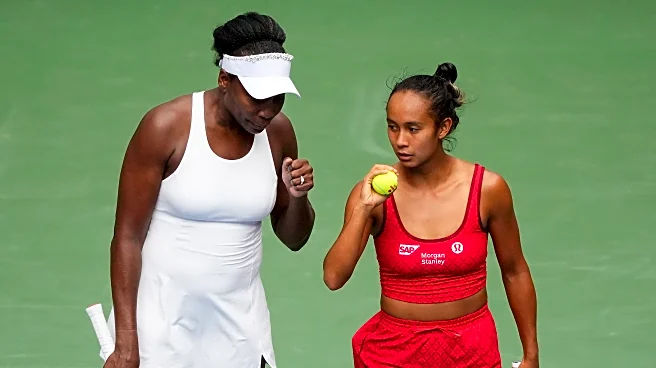What's Happening?
During a third-round match at the US Open between Aryna Sabalenka and Leylah Fernandez, a fan surprised the crowd by proposing to his girlfriend in front of over 14,000 spectators at Louis Armstrong Stadium. The unexpected proposal drew attention away from the tennis match as the man knelt down and presented a ring, prompting his girlfriend to react with shock and disbelief. The crowd erupted in cheers, capturing the moment on their phones, as the woman eventually accepted the proposal, sealing it with a kiss. The event was broadcasted live, with commentators noting the shift in focus from the match to the romantic gesture.
Why It's Important?
The proposal at the US Open highlights the growing trend of public engagements at major events, showcasing how personal moments can become viral sensations. This incident reflects the blending of sports and personal milestones, creating memorable experiences for attendees and viewers alike. The widespread attention and positive reception of the proposal underscore the appeal of spontaneous, heartfelt moments in public settings, contrasting with recent controversies at other events. Such occurrences can enhance the atmosphere of sporting events, adding layers of entertainment beyond the competition itself.
What's Next?
The viral nature of the proposal suggests potential for similar public engagements at future sporting events, as organizers may seek to capitalize on the emotional impact and audience engagement these moments generate. The couple's story may continue to gain media attention, possibly leading to interviews or features that explore their experience. Additionally, the US Open may consider incorporating more interactive elements to engage fans and create memorable experiences, leveraging the positive publicity from this event.
Beyond the Headlines
The proposal at the US Open contrasts sharply with the recent 'Coldplaygate' incident, where a kiss cam moment led to controversy and professional repercussions. This highlights the dual nature of public displays of affection, where they can either be celebrated or scrutinized depending on the context. The incident raises questions about privacy and the ethics of broadcasting personal moments, especially in the age of social media where such events can quickly become public discourse.













